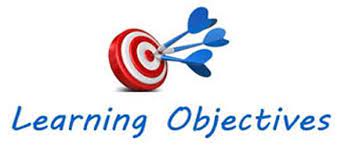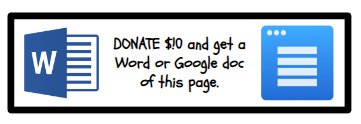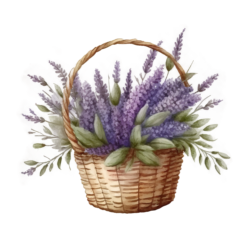


This page will teach you all about writing ELA objectives.
See content and language objectives at the bottom of the page.
ASK YOURSELF: What do you want your students to learn as a result of the lesson?
- IEP Goal Bank comes in handy to write objectives, too!
- Education Oasis ~ Stems
- See also writing Content and Language Objectives on my RETELL page.
- Also, check out Hundreds of Free Lesson Plans!
Writing ELA Objectives in 3 easy steps: create a stem, add a verb, and determine the outcome.
Step 1: CREATE A STEM
- After completing the lesson, the students (we) will be able to. . .
- After this unit, the students (we) will. . .
- By completing the activities, the students (we) will. . .
- During this lesson, the students (we) will. . .
Make the stems kid-friendly! 🙂
Step 2: ADD A VERB
- After completing the lesson, the students (we) will be able to predict. . .
- After this unit, the students (we) will distinguish. . .
- By completing the activities, the students (we) will construct. . .
- During this lesson, the students (we) will defend. . .
Step 3: DETERMINE ACTUAL PRODUCT, PROCESS, OUTCOME
OBJECTIVE SAMPLES ~ notice how the objectives become more challenging as we move through Bloom’s Taxonomy. Try to teach towards the upper end of Bloom’s Taxonomy.
The student will. . .
KNOWLEDGE:
- Draw scenes from chapter_______. Under each scene, describe what is happening.
- Use a story map to show the events in chapter ________.
- Draw a cartoon strip of the chapter’s beginning, middle, and end.
- List the story’s main events.
- Make a timeline of events.
- Make a facts chart.
- List the pieces of information you remember.
- Make an acrostic.
- Recite a poem.
- Make a chart showing. . .
COMPREHENSION:
- Draw a picture that summarizes the chapter. Then, write a sentence that tells about the picture.
- Summarize the chapter in your own words in one paragraph.
- Summarize the chapter in your own words in two paragraphs.
- Cut out or draw pictures to show an event in the story.
- Illustrate the main idea.
- Make a cartoon strip showing the sequence of events.
- Write and perform a play based on the story.
- Make a coloring book based on the story.
- Retell the story.
- Paint a picture of your favorite part.
- Prepare a flow chart of the sequence of events.
- Write a summary.
APPLICATION:
- Be a new character to the story. Tell the story’s ending would change.
- With a partner, change the ending of the story. One person will be a new character, and the other be a character from the book.
- In a group, act out the ending of the story.
- Construct a model to demonstrate how something works.
- Make a diorama to illustrate an important event.
- Compose a book about. . .
- Make a scrapbook about. . .
- Make a paper-mache map showing information about. . .
- Make a puzzle game using ideas from the book.
- Make a clay model of. . .
- Paint a mural of . . .
- Design a market strategy for a product.
- Design an ethnic costume.
ANALYSIS:
- Take an event in the text. Make a text-to-world connection.
- Take an event from the story and make a text-to-text connection.
- Take an event from the story and make a text-to-self connection.
- Design a questionnaire to gather information.
- Make a flow chart to show critical stages.
- Write a commercial for the book.
- Review the illustrations in terms of form, color, and texture.
- Construct a graph to illustrate selected information.
- Construct a jigsaw puzzle.
- Analyze a family tree showing relationships.
- Write a biography about a person being studied.
SYNTHESIS:
- Design a list of 10 solutions to help a character solve a problem.
- Write a dialogue between you and one of the characters in the book. Then, help the character solve a problem.
- Meet with a partner and role-play how to solve one of the character’s problems.
- Invent a machine to do specific tasks from the text.
- Design a building.
- Create a new product, name it, and plan a marketing campaign.
- Write about your feelings concerning. . .
- Write a tv show, a puppet show, pantomime, or sing about. . .
- Design a book or magazine cover about. . .
- Devise a way to. . .
- Create a language code. . .
- Compose a rhythm or put new words in a melody.
EVALUATE:
- Choose a character and fill out a T chart. Then, express your opinion of the character using 3 pieces of evidence from the book.
- Choose a character and fill out a T chart to express your opinion of the character. Then, come up with one good detail and discuss it with a partner.
- Choose a character from the book. Express your opinion of this character using 5 pieces of evidence from the book in T chart form. Use the T chart, and then write a paragraph.
- Prepare a list of criteria to judge the book. Indicate priority and ratings.
- Conduct a debate about an area of special interest.
- Make a booklet about 5 qualities a character in the book possesses.
- Form a panel to discuss a topic. Discuss criteria.
- Write a letter to_____ advising changes needed.
- Prepare arguments to present your view about. . .
MORE OBJECTIVE SAMPLES…
|
Language Arts Objective Examples |
|
|
|
After completing the lesson, the students (we) will be able to:
|
MORE OBJECTIVES…
Reading Comprehension
- The student will use prereading strategies to predict what the story is about on a post-it note. The student will explain whether their prediction was confirmed at the end of class, with supporting details from the text.
- During the lesson, the student will generate a list of questions about the story as they read.
- After completing the lesson, the student will be able to make generalizations and draw conclusions about the events in the story by citing three examples.
- After reading the text, the student will be able to answer questions about the story’s meaning.
- At the end of the lesson, the student will be able to summarize the passages.
- By completing the activities, the student will be able to discuss interpretations of the story.
- After reading the text, the student will cite passages to support questions and ideas.
- The student will use context to figure out word meanings and write these meanings on the post-it notes.
- During this lesson, the student will read with a purpose and take notes to monitor comprehension.
- During this lesson, the student will practice various reading strategies and explain how two strategies were used.
- By the end of this unit, the students will apply critical reading strategies to identify main ideas in short passages with 70% mastery.
Critical Thinking
- During this lesson, the student will generate ideas with a clear focus in response to questions.
- By the end of this lesson, the student will support ideas with relevant evidence.
- The students will respond to other students’ ideas, questions, and arguments.
- During this lesson, the students will question other students’ perspectives in a debate.
- By the end of this lesson, the students will present ideas logically and persuasively in writing.
Listening and Speaking
- During this lesson, the student will demonstrate comprehension of stories as they are read aloud by participating in every pupil response activity.
- By the end of this lesson, the students will listen actively and carefully to others and retell others’ opinions and ideas.
- During this lesson, the students will respond to other students’ questions while actively participating in a group discussion.
Writing Content and Language Objectives
*** PDF of Content and Language Objective Verbs ***
Great examples and step-by-step directions!
Writing Content and Language Objectives
![]()
